Wärtsilä to Supply Simulator for Inland Shipping Training
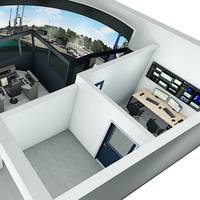
The technology group Wärtsilä said it has been contracted by the City of Duisburg, Germany, to provide the latest in simulator technology for inland waterway navigation. The simulator will consist of seven full mission bridges in two locations within Duisburg; six at the Schiffer-Berufskolleg Rhein vocational college, and one at the DST Development Centre for Ship Technology and Transport Systems.The technology will enable inter-connectivity with other simulators, a universal hardware interface for future developments, and can be used for R&D purposes, Wärtsilä said.
Retractable Flanking Rudders for Imperial’s Push Boats
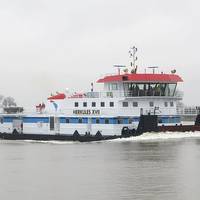
Imperial Shipping has chosen Van der Velden Marine Systems retractable flanking rudder systems for its push boats. The retractable flanking rudder system is an in-house innovation of Van der Velden Marine Systems (VDVMS). The system brings new efficiency to the inland shipping industry and will first be used in Paraguay. At the request of Dutch shipbuilder Damen, VDVMS developed the system and had it tested independently by the Development Centre for Ship Technology and Transport Systems (DST) in Duisburg (DE). Flanking rudders are often used for inland river tow boats.
Damen's Ship with Van der Velden FLEX Tunnel Commissioned
The first ship outfitted with the Van der Velden FLEX Tunnel was named Friday, August 14th in Duisburg. The Rhenus Duisburg, the new barge combination from shipping company Rhenus PartnerShip, has been put through extensive tests and trials. Much data has been collected so as to establish the appropriate and ultimate efficiency of the Van der Velden FLEX Tunnel. The system developed by Van der Velden offers advantages for barges in terms of speed, capacity, propulsion, manoeuvrability and fuel economy. Van der Velden FLEX Tunnel is an innovative fold-tunnel system designed specifically for inland waterways. Fitted with conventional tunnels, loaded barges sail in deep water for an average of 80% of the time.
Van der Velden Marine Systems: Innovating Efficiency
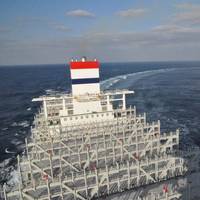
After celebrating its 50th anniversary in 2013, Van der Velden Marine Systems, a daughter company of the Damen Group, is not resting on its laurels as the Netherlands-based company’s R&D department works to continue advancing maritime maneuvering and propulsion efficiency. “We are currently building a 97m2 Energy Saving Package (ESPAC) system for a series of three 18,000 TEU vessels being built for CMA CGM at the CSSC-affiliated Shanghai Waigaoqiao Shipyard in China,” said Edwin van Buren, Director R&D at Van der Velden Marine Systems.
Van der Velden in Pole Position for 'Ahoy Rotterdam 2013'
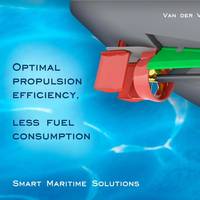
Van der Velden Maritime Systems will be showcasing a selection of their vessel propulsion products at upcoming 'Ahoy Rotterdam', 5-8, November 2013 at booth 1405 in Hall 1. The company has also been selected to participate in the Green Route. Van der Velden will present information, about its products including the Velden® FLEX tunnel manoeuvring and propulsion system, which is designed for inland and coastal ships, and offers tremendous advantages in the expansion of capacity, fuel consumption, speed and manoeuvrability.
New Retractable Tunnel for Inland Shipping
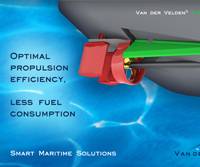
The Inland WaterWays division of Van der Velden Marine Systems in the Netherlands has introduced an innovative new retractable tunnel specially developed for inland vessels. Using a unique construction, the Van der Velden® Flex Tunnel offers major benefits to ship owners and operators in terms of speed, loading capacity, manoeuvrability and reduced fuel consumption. Moreover, an overall propulsion efficiency of 10% can be achieved. Water levels are unpredictable and low water levels have serious consequences for inland vessels, as it limits loading capacity and operability.





